Australia's splendid coastline means there is no shortage of people wanting to establish their ideal home and garden with a view. The natural coastline is rugged and windswept, with a definite color palette. It is rarely green and lush — more often a complex but complementary mixture of foliage colors, including grays and blues with dusty greens and the warmer hues of the earth, set against the backdrop of the Pacific.
Construction materials like split stones for walls and floors add texture and color variation to mimic the rugged landscape. Weathered hardwood for pergola structures, decks and fence details reinforce the sense of place and the presence of driftwood. Furniture can be easily incorporated with earthy fabrics and timber that is allowed to weather, requiring minimal care. Features or sculptures in steel finishes, particularly the rusted appeal of Cor-Ten steel, complete the look. Generally, the more weather beaten, the better.
Fine-leaved plants like
Westringia fruticosa and
Banksia spinulosa, or ornamental grasses like
Lomandra tanika and
Dianella caerulea ‘Little Jess' will mix well with tough succulent-like ground covers such as
Senecio serpens and
Carpobrotus glaucescens. For trees, it is hard to beat
Banksia integrifolia, but olive trees would be a great substitute, lending their silvery hue to the garden.
This combination of dusty-colored plants mixed with succulents creates a look that is very dry, coastal and modern.
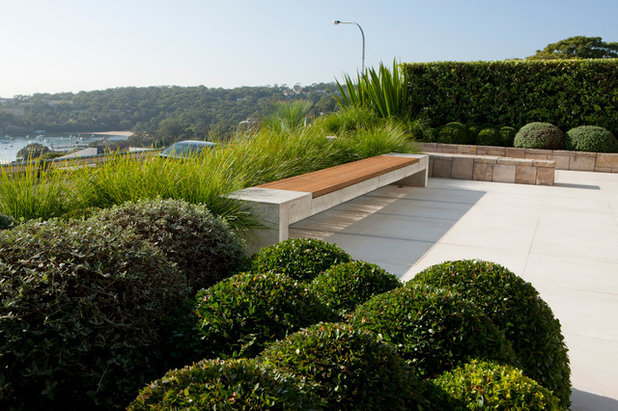
Weathered stone and concrete combined with timber is a great basic palette for a coastal look.
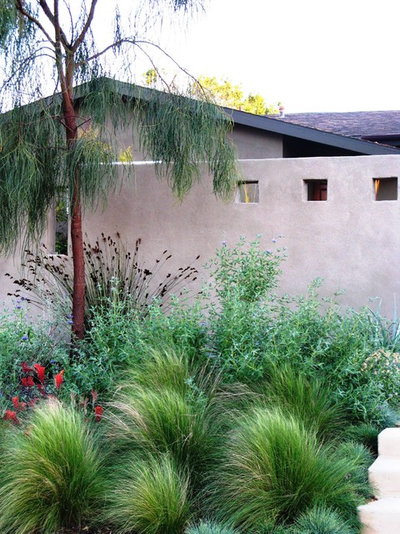
debora carl landscape design
Ornamental grasses like
Lomandra 'Tanika' provide drama in a garden when they sway in the wind.
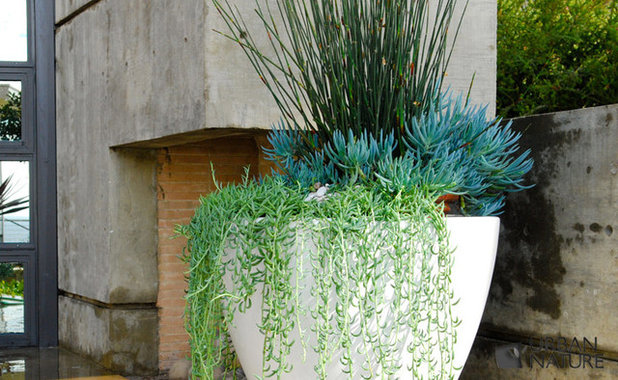
Urban Nature / Troy Silva Design Group
Senecio serpens adds a great color tone to a green garden. The shapes of the plant add interest to a garden space.
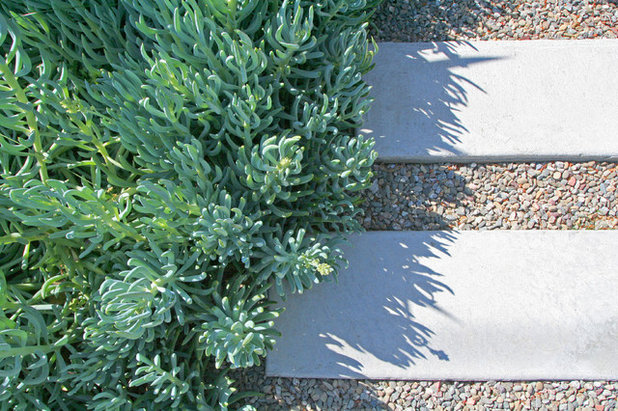
Shades Of Green Landscape Architecture
Texture is always important, so try contrasting gravels with natural stone flooring and then edge it with Senecio.
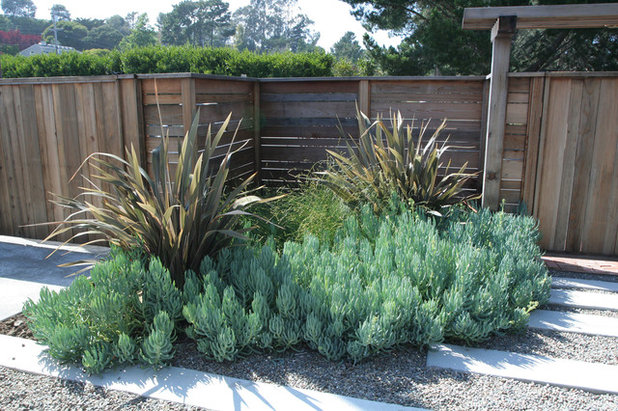
Shades Of Green Landscape Architecture
The backdrop of weathered timber fencing for coastal plantings builds a dramatic coastal feel.
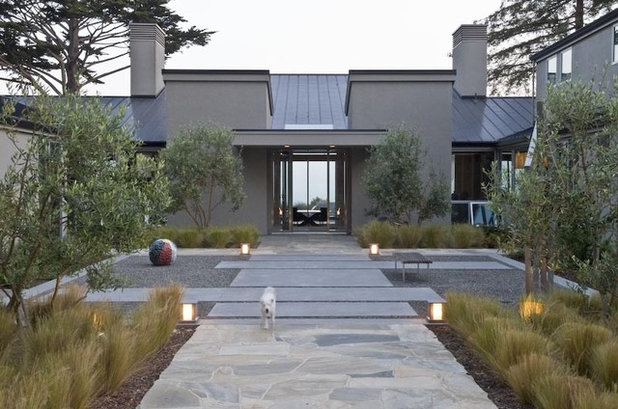
Randy Thueme Design Inc. - Landscape Architecture
Olive trees frame the entrance to this house. They are a hardy tree able to manage most conditions, and the glaucous and gray tones add contrast to other plants.
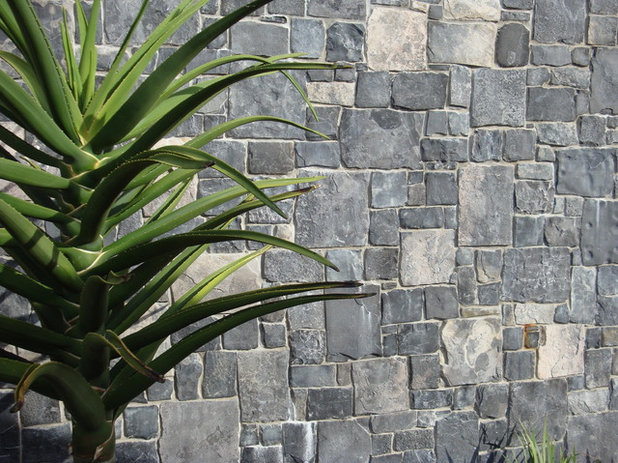
Stone feature walls are striking in a barren location and help set off new plantings.

The combination of earthy materials and resilient plants provides an intriguing entrance to this house.
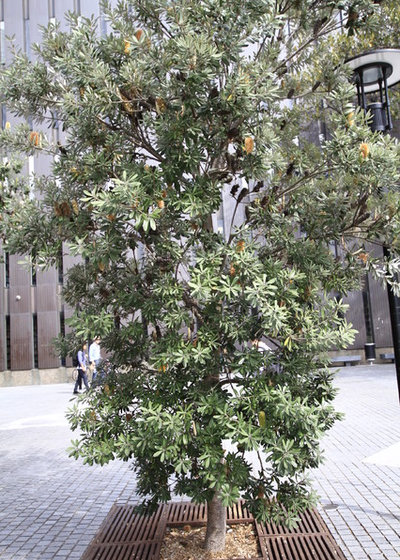
Silver foliage — whether in an olive tree, a ground cover or a grass — is an essential inclusion in any coastal garden.
6 Stunning Silver-Leaf Plants
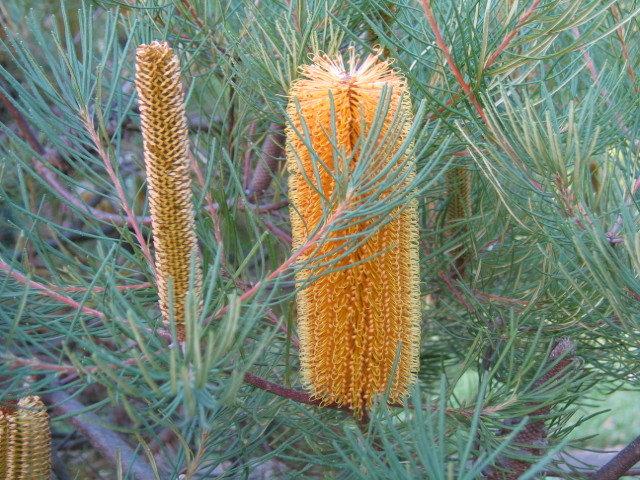
A great Australian native, Banksia can add color to a coastal garden, providing warm summer hues and flowers all year around.
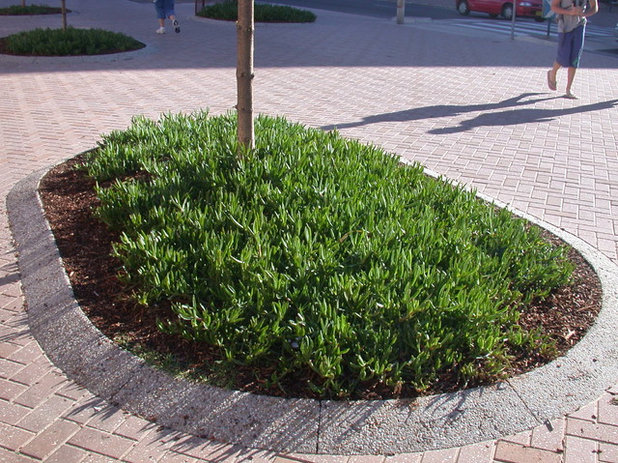
Trailing succulents are a great way to soften the edges of pathways and paved areas. Mulch around them with gravel for added effect.
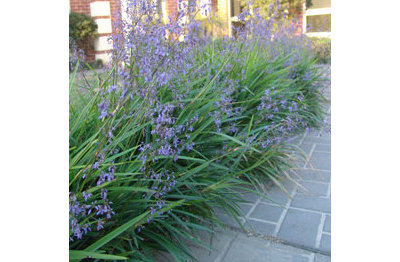
The texture of grasses is an important contrast against other plant foliage.
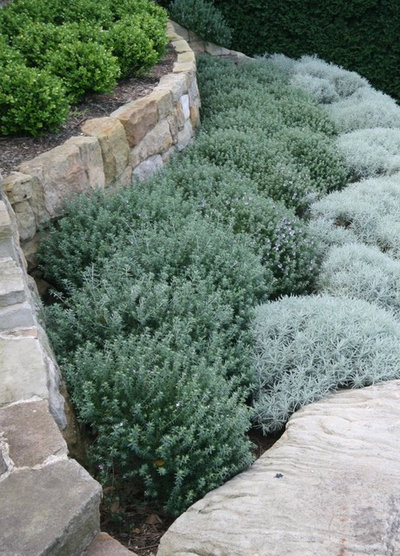
Not only do fine-leaved plants withstand heavy coastal winds, but they look great when mass planted adjacent to other fine-leaved plants.
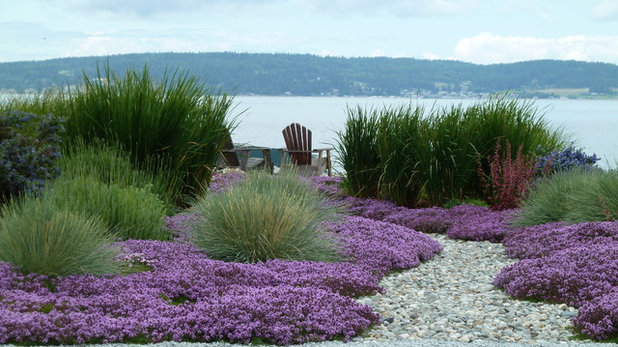
Lankford Associates Landscape Architects
Plants can be aranged to give a dry-creekbed appearance, highlighting arid coastal conditions.





